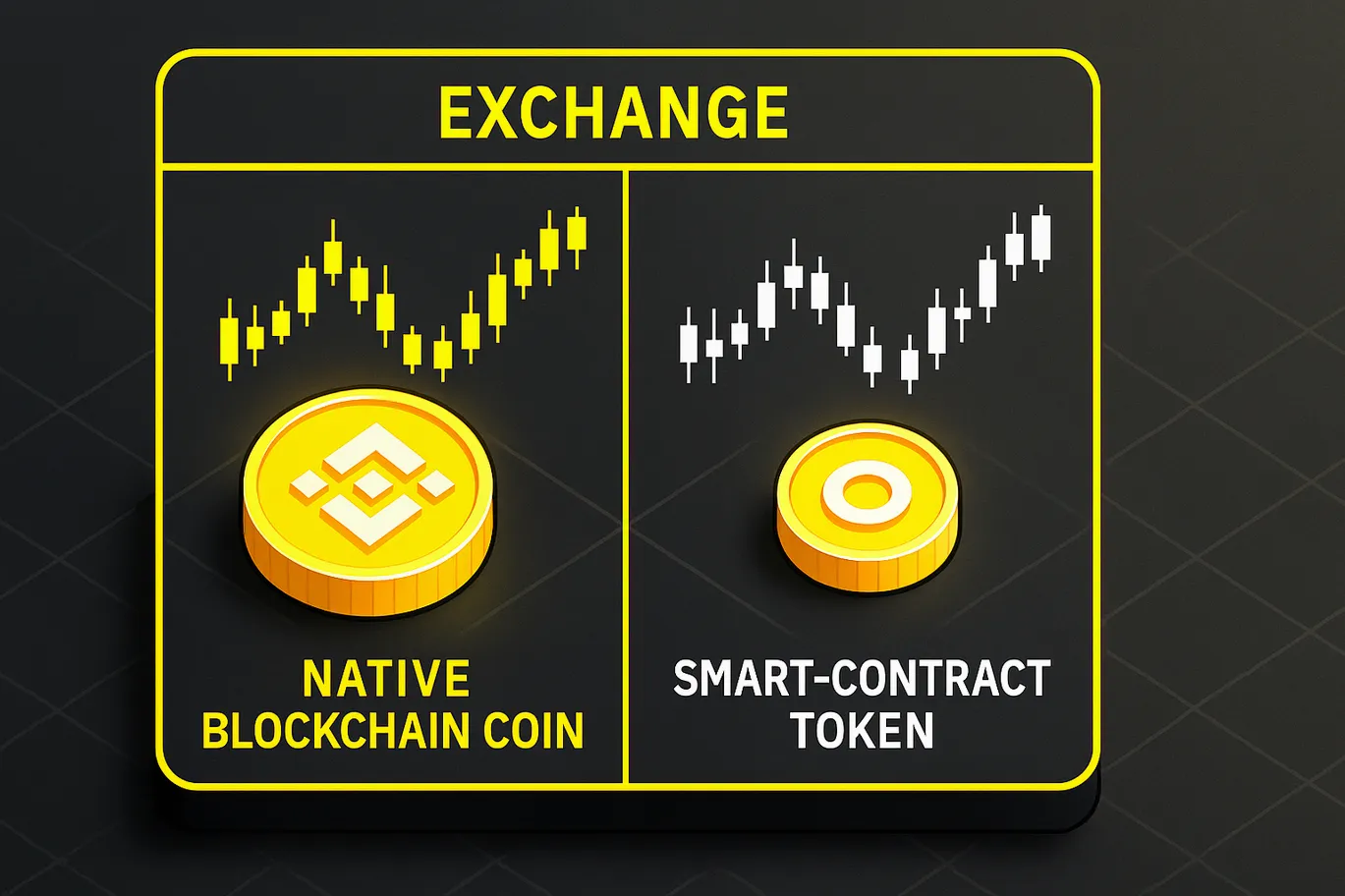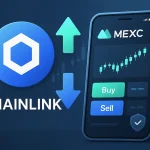If you’ve ever typed “What is coin and token, Binance” into a search bar, you’ve likely seen conflicting definitions and jargon-heavy threads. This clear, practical guide breaks down coins versus tokens in plain language, then shows how that difference matters when you research projects, manage risk, and actually trade on Binance.
Pro tip if you plan to start or optimize your account: new users can unlock a 20% fee discount and up to $10,000 in extra benefits by registering through CRYPTONEWER.
Coins vs Tokens at a glance
- Coins are native to their own blockchains. Examples: BTC on Bitcoin, ETH on Ethereum, BNB on BNB Chain. They usually secure the network, pay transaction fees, and sometimes serve as reserve collateral across the ecosystem.
- Tokens are built on top of existing blockchains via smart contracts. Examples: USDT (ERC‑20 on Ethereum and also on other chains), UNI (ERC‑20), CAKE (BEP‑20 on BNB Chain). They inherit the security and fees of the underlying chain and represent specific utilities, governance rights, claims on revenue, or digital items.
Both coins and tokens are “cryptocurrencies,” but they play different roles. Think of coins as the native fuel of a blockchain and tokens as applications and assets that ride on that fuel.
What makes a coin a coin
A coin typically has these characteristics:
- Native ledger: It is the primary currency of a Layer‑1 network (e.g., Bitcoin, Ethereum, BNB Chain, Solana). Every node in that network validates and accounts for it on the base layer.
- Security and fees: It’s used to pay gas/transaction fees and often to secure the network (proof-of-work mining or proof-of-stake validation).
- Monetary policy: Issuance, halving, staking rewards, or burn schedules are coded at the protocol layer, influencing long-term supply dynamics.
Notable examples:
– BTC: Digital scarcity and settlement on the Bitcoin network.
– ETH: Gas for computation on Ethereum and collateral for many DeFi protocols.
– BNB: Gas on BNB Chain, with burn mechanisms tied to network activity.
What defines a token
A token is created by a smart contract deployed on an existing chain. It’s flexible by design:
- Standards: ERC‑20 (fungible), ERC‑721 (NFTs), ERC‑1155 (semi-fungible), BEP‑20 and BEP‑2 on BNB ecosystems, and similar standards on other networks.
- Inherited security: Tokens rely on the underlying chain’s validators and consensus.
- Custom logic: Token contracts can encode governance voting, fee distributions, staking rewards, vesting schedules, or access controls.
Common token types:
– Utility tokens: Access to product features, discounts, or in-app payments.
– Governance tokens: Voting power in DAOs and protocol upgrades.
– Stablecoins: Pegged to assets like USD (e.g., USDT, USDC, BUSD), used for trading and settlement.
– Security and asset-backed tokens: Tokenized equities, treasuries, real estate, or revenue-sharing instruments (subject to regulation).
– NFTs: Unique digital items for art, gaming, identity, and more.
The practical difference when you invest or trade
- Fee exposure: Tokens incur the gas fees of their host chain. If Ethereum gas is high, ERC‑20 transfers can be expensive. On BNB Chain, BEP‑20 transfers are generally cheaper. Coins pay their own chain’s gas by definition.
- Risk profile: Coins usually depend on network effects and protocol-level adoption. Tokens add application-specific risks (team execution, tokenomics, treasury management) and sometimes regulatory classification.
- Tokenomics complexity: Token supply schedules, vesting cliffs, and emissions can create sell pressure. Always check if a large unlock is imminent.
- Liquidity and on-ramps: Major coins often have deeper liquidity across exchanges and fiat on-ramps. Many tokens rely on liquidity pools and can be more volatile.
Where Binance fits into the picture
Binance supports both native coins and tokens across major networks and Layer‑2s. That means you can:
- Deposit and withdraw with multiple networks for the same asset (e.g., USDT on ERC‑20 vs. BEP‑20). Choosing a cheaper network may save you fees.
- Trade spot, margin, and futures pairs with robust liquidity for both coins and tokens.
- Earn yield via staking, Simple Earn, liquidity pools, and Launchpool for selected coins and tokens.
- Bridge or convert assets between supported networks when available.
Sign up or optimize your account with the best fee tier you can get. Use CRYPTONEWER to unlock a 20% fee discount plus up to $10,000 in benefits for new users.
How to tell if something is a coin or token in seconds
- Check the project’s documentation: Does it run its own mainnet? If yes, its native asset is a coin.
- Look up the contract address: If it’s an ERC‑20/BEP‑20/etc., it’s a token. Verify on block explorers like Etherscan or BscScan.
- Observe gas usage: If you need ETH to move it on Ethereum, it’s a token on Ethereum. If you need BNB to move it on BNB Chain, it’s likely a BEP‑20 token.
- Exchanges and tickers: Listings often show the network next to the asset. On Binance deposit pages, network options reveal whether you’re dealing with a token or a coin.
Real-world examples to cement the concept
- ETH vs. UNI on Ethereum: ETH is the native coin; UNI is a token giving governance rights in the Uniswap protocol.
- BNB vs. CAKE on BNB Chain: BNB is the native coin; CAKE is a BEP‑20 token used for staking and rewards within PancakeSwap.
- SOL vs. SRM on Solana: SOL is the coin; SRM is a token for trading fee discounts and governance on Serum.
- MATIC/ETH on Polygon: MATIC is the native coin of Polygon PoS; ERC‑20 tokens bridged to Polygon are tokens on that chain.
Research checklist before you buy
- Use case clarity: What real problem does the coin or token solve? Is there real user demand?
- Team and governance: Transparent leadership, audits, and an active community are positive signals.
- Tokenomics: Total and circulating supply, emission schedule, vesting, burn/buyback policies.
- Liquidity and market depth: Slippage risk matters. Thin liquidity can exaggerate moves.
- Security: Audits, bug bounties, time-tested code. For tokens, are contract privileges (mint/pause) clearly disclosed?
- Compliance and jurisdiction: Know your local rules, especially for tokens that look like securities.
Tip: You can cross-check circulating supply vs. fully diluted valuation (FDV). A large gap plus heavy emissions may signal future sell pressure.
Buying coins and tokens on Binance step by step
1) Create or upgrade your account: Register with CRYPTONEWER to secure a 20% fee discount and up to $10,000 in new-user benefits.
2) Complete verification: Higher limits and fiat on-ramps typically require KYC.
3) Fund your account: Bank transfer, card, P2P, or crypto deposit. Choose the network carefully when depositing tokens.
4) Choose your market:
– Spot trading for direct coin/token purchase.
– Convert for fast swaps with minimal interface complexity.
– Margin or Futures if you understand leverage and risk management.
5) Optimize fees and execution:
– Use limit orders for precise entries.
– Consider maker vs. taker fees; your 20% discount via CRYPTONEWER applies on top of standard tiers.
– For tokens, check the network you plan to withdraw to and the associated fees.
Managing your assets safely
- On-exchange security: Enable 2FA, anti-phishing codes, and withdrawal whitelists. Use device verification.
- Self-custody basics: If you withdraw to a wallet, back up your seed phrase offline and test small transactions first.
- Network awareness: Never send a token to a wallet that doesn’t support its network standard (e.g., don’t send BEP‑20 to an ERC‑20-only address without a compatible wallet setup).
- Contract verification: For tokens with many impostors, verify the official contract address via the project’s website and a recognized block explorer.
Fees, networks, and your bottom line
- Gas fees: Token transfers depend on the base chain’s congestion. During peak times, ERC‑20 fees may surge; BEP‑20 and certain Layer‑2 networks can be cheaper.
- Exchange fees: Maker/taker fees affect frequent traders. Start with the 20% discount via CRYPTONEWER to immediately reduce costs.
- Withdrawal fees: Vary by network. For stablecoins and frequently moved assets, consider lower-cost networks if your counterparty accepts them.
Common myths and quick clarifications
- “Tokens are less valuable than coins.” Value depends on adoption and cash flows or utility, not just asset type.
- “All tokens are memecoins.” Many tokens power serious DeFi protocols, gaming economies, and real-world asset markets.
- “Stablecoins are risk-free.” They depend on reserves, transparency, and banking partners. Always evaluate the issuer’s attestations and mechanics.
- “If it’s on Binance it must be safe.” Listings add vetting but don’t remove market or smart contract risk. Do your homework.
Advanced angles for deeper understanding
- Layer‑2 tokens: Some L2s have native tokens, while many assets bridged to L2s remain tokens from the L1 perspective.
- Cross-chain bridges: Bridged tokens can carry additional risks (bridge security, liquidity fragmentation).
- MEV and execution: On certain chains, transaction ordering can influence DeFi outcomes. Understanding this can refine your strategy.
- Governance capture: Token voting power concentration can affect protocol longevity and fairness.
Quick FAQ
- What is a coin in crypto terms? The native asset of a blockchain used for gas, security, and base-layer settlements.
- What is a token in crypto terms? A smart-contract asset built on an existing chain, representing utility, governance, or other rights.
- Is BNB a coin or a token? BNB is a coin on BNB Chain, used to pay gas and secure the network.
- Is USDT a coin or token? USDT exists as a token on multiple chains (ERC‑20, BEP‑20, TRC‑20, etc.).
- Where can I buy both coins and tokens easily? Binance offers deep liquidity for major coins and tokens across multiple markets. New users can join via CRYPTONEWER for a 20% fee discount and up to $10,000 in benefits.
Why the difference matters on Binance specifically
- Precision deposits and withdrawals: Choosing the right network for your token can cut fees dramatically and prevent mis-sends.
- Strategy design: Coins might be core holdings; tokens can be tactical plays around DeFi, governance, and ecosystem growth.
- Rewards and staking: Coins and tokens can both offer yields, but the risk sources differ. Vet smart contract risk for token staking.
Level up your trading stack and keep your costs low. Register through Binance sign-up with code CRYPTONEWER to activate a 20% fee discount and explore up to $10,000 in benefits, then put your new understanding of coins and tokens to work with confident, network-aware decisions.





